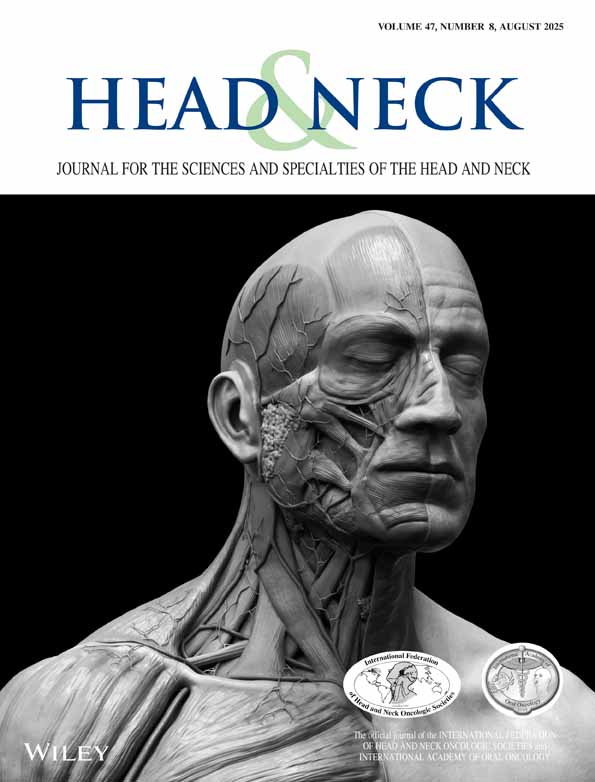Abstract
Background
There is a need to evaluate the effectiveness of laryngeal fracture repair using rigid adaptation plates.
Methods
A retrospective chart review of patients undergoing open repair of laryngeal fractures using metal alloy plates, from 1987 to 1995, was performed. Postoperative airway, deglutition, and voice were assessed. Postoperative follow-up ranged from 1 to 58 months (median, 27 months). All 10 patients sustained blunt or penetrating laryngeal trauma. After patients were resuscitated according to the ABC principles recommended by the American College of Surgeons, each underwent open repair of laryngeal fractures using rigid adaptation plates.
Results
Outcome was measured by perceptual analysis of the postoperative airway, swallowing, and voice, as well as biocompatibility. Ten patients underwent repair and stabilization of the larynx using adaptation plates. Nine patients sustained blunt trauma, and one patient sustained penetrating trauma. Voice was subjectively graded as good if it resembled the preinjury status, fair if it differed, and poor if it represented aphonia, whisper, or unintelligible speech. Airway was graded as good if it resembled preinjury status, fair if mild exercise intolerance or aspiration existed, and poor if the patient could not be decannulated. Nine patients had a good airway following repair, and six of seven patients requiring tracheotomy were decannulated. All patients tolerated the plates well and suffered no surgical complications.
Conclusion
Repair of the laryngeal framework using adaptation plates provides adequate, immediate stabilization with restoration of function and is an alternative to traditional methods of repair. © 1998 John Wiley & Sons, Inc. Head Neck 20: 707–713, 1998.




